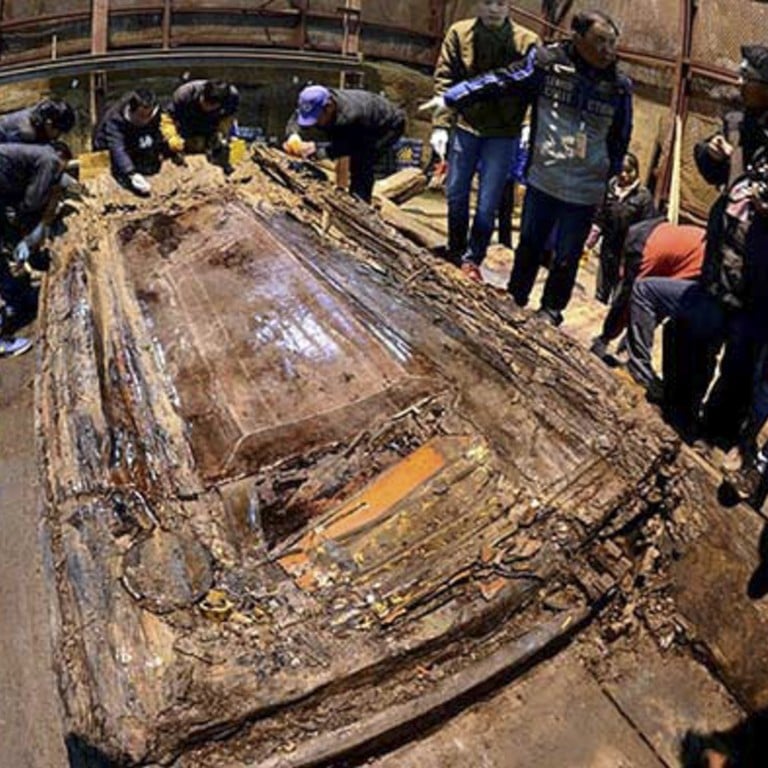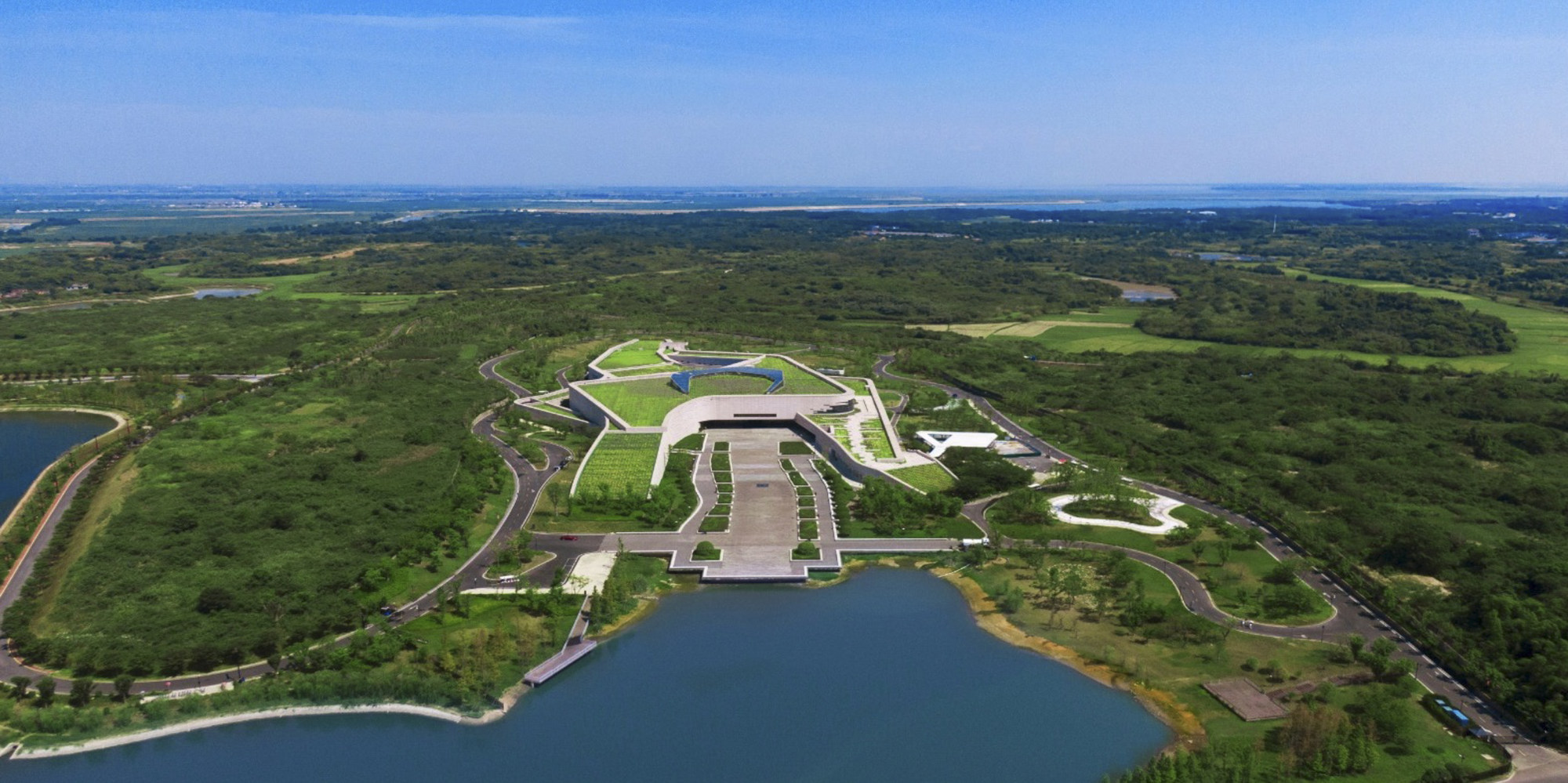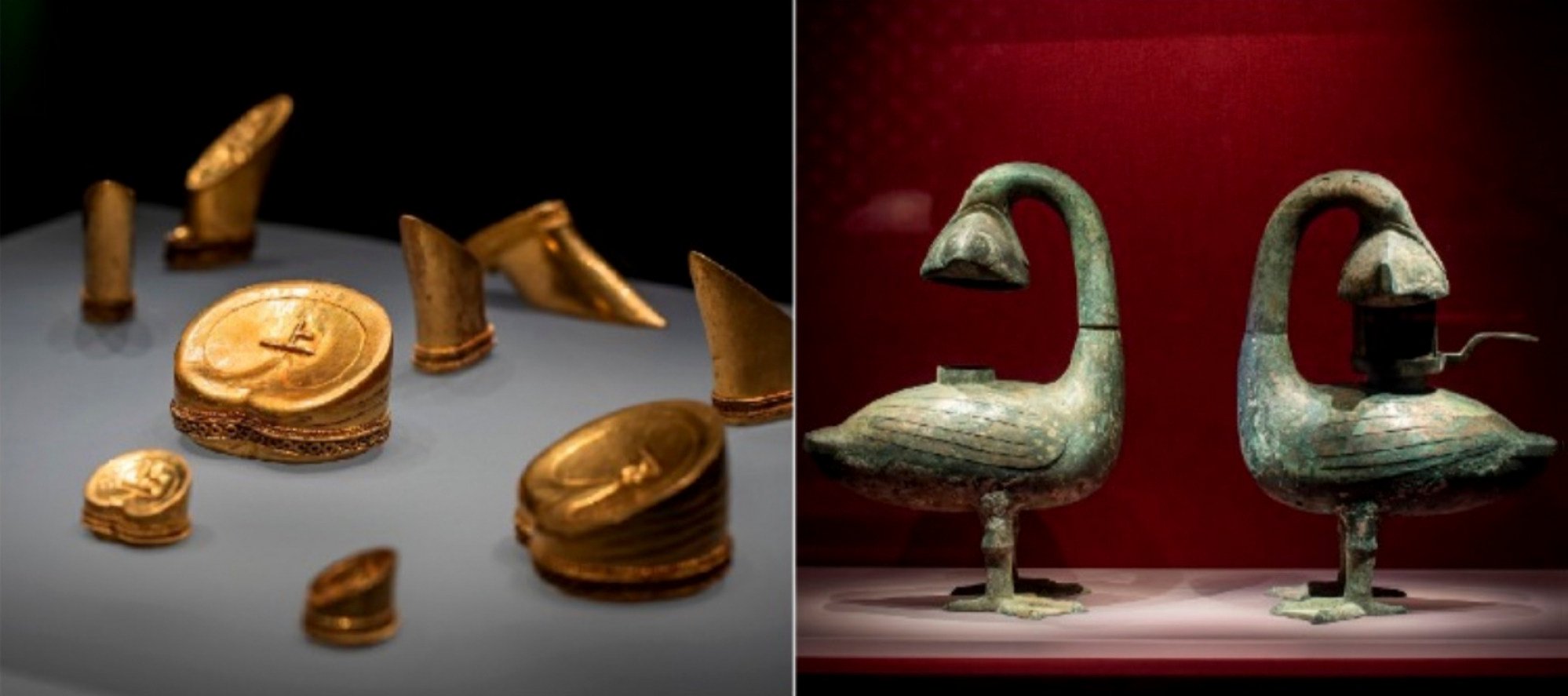
Meet China’s shortest-reigning emperor, who was banished in life but dignified in death
- Liu He ruled as emperor for just 27 days in 74BC, and he was banished as a commoner after being dethroned
- But his tomb is full of treasures, and they offer an insight into one of the most successful periods of Chinese history
When Liu He was deposed as emperor in 74BC, it is unlikely he imagined that he would set a record that would stand for nearly 2,100 years. Liu has regrettable stature as the Chinese emperor who ruled for the shortest time, lasting for just 27 days.
After his banishment, Liu was renamed Marquis of Haihun and would spend his remaining days living by a lake, and he would eventually receive a full-scale tomb after he died.

In the most recent announcement, archaeologists said they found what could be the oldest known painting of Confucius ever found in China. Around 5,000 bamboo slips with Confucius teachings were found in the tomb.
That, along with bronze, gold and jade artefacts, makes it clear that Liu was not treated like a commoner in his death.
The reason for the honour may be straightforward – Liu was the grandson of Emperor Wu of Han, one of the most influential leaders in Chinese history. Wu reigned for 54 years and helmed a period of significant territorial expansion. He also strengthened the central government and improved China’s status abroad.
The treasures left in Liu’s tomb indicated that the legacy of Emperor Wu was still a powerful force, and Yang Jun, a researcher at the Jiangxi Provincial Institute of Cultural Relics and Archaeology, said in the press release that the tomb “shed light on the mightiness of the Han Dynasty”.

One specific example is five well-preserved horse-drawn chariots left in the tomb, the only example of these carriages being buried with a Han dynasty noble south of the Yangtze River. This indicates that the “owner was among the highest echelons of the Han dynasty.”
Since 2015, Liu’s tomb has transformed into maybe the most important archaeological site to learn about Emperor Wu. Yang said that, before the discovery, there had been few artefacts that offered a direct means to study the respected leader.
So far, scientists have unearthed 4 million bronze coins, 480 pieces of gold - the largest single batch ever found in a Han dynasty tomb - along with thousands of bamboo slips of writing.
To elaborate on what Yang said about direct artefacts, the excavations confirmed that Han societies used a string with 1,000 coins strung together as a monetary unit.

